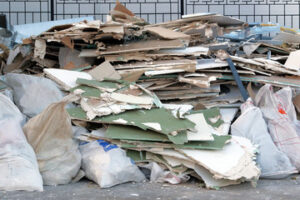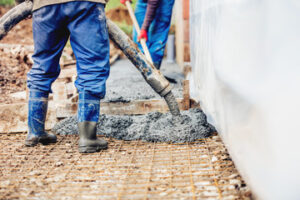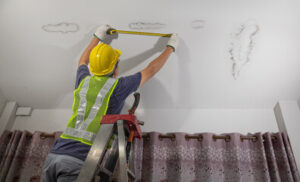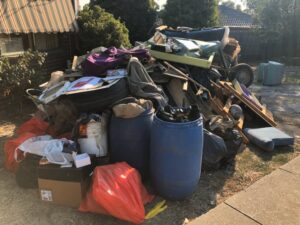Whether you are moving your business or simply cleaning out your garage, Junk Removal Hemet is a valuable service. It saves you time and energy, while also eliminating the stress of figuring out how to dispose of unwanted items.

Professional junk removal services offer a convenient, stress-free way to remove unwanted items and clutter. They value clear communication and will work with you to create a custom plan that fits your needs. They are also trained to safely handle heavy and potentially hazardous materials. This allows them to complete the job quickly and efficiently without putting you or your employees at risk.
Junk removal can be a labor-intensive process, especially if you’re dealing with large or cumbersome items. If you try to tackle a project like this on your own, it could take weeks or even months to clean out all the junk and debris you’ve accumulated. This can be incredibly frustrating and even dangerous. Junk removal services can save you countless hours by handling all the heavy lifting and disposal for you.
Another benefit of using a junk removal service is that they are familiar with local regulations and will ensure that your waste is disposed of in accordance with local laws. This is important for preventing environmental harm and keeping your community safe. In addition, they will ensure that your waste is properly recycled or donated whenever possible. This is a great way to give unwanted items a second life and reduce the amount of trash that ends up in landfills.
A final benefit of using a junk removal service is the peace of mind that comes with knowing your space is clean and organized. This can be a huge relief for homeowners who are trying to prepare for a move or renovation or simply want to enjoy a more functional living environment.
A cluttered home can make it difficult to find things you need, increase your risk of injury, and affect your mood. It can also be a turnoff for potential buyers, so it’s important to declutter your home before putting it on the market. A junk removal service can help you reclaim your space and enhance the curb appeal of your home, making it more attractive to potential buyers. In addition, it can improve your overall mental well-being by reducing stress and creating a sense of accomplishment.
Saves Time
Clutter is costly, not just in terms of time spent on cleaning and maintenance. It can also cost you in lost productivity and health care costs. Junk removal services are an affordable, efficient way to save time and reclaim your space. A clean environment promotes mental clarity and reduces stress, making it easier to focus on the tasks at hand.
Junk removal services are well equipped to handle the physical work involved in a full-scale junk haul. They have the manpower and equipment to quickly clear out spaces that seem insurmountable, including inherited properties or construction sites. They can tackle anything from old furniture to broken appliances and heavy debris, leaving you free to focus on more important matters.
Trying to fit bulky items in your car or taking multiple trips to the landfill on your own can be expensive and time-consuming. With a junk removal service, you pay one flat fee, and everything is taken care of in just one visit, often within the hour.
A professional junk removal service is also an eco-friendly choice, ensuring recyclable and reusable items don’t end up in the landfill. Edmonton-based services like You Junk It… I Dump It prioritize sustainable practices, reducing the amount of waste that ends up in our landfills and oceans.
Moving, lifting, and disposing of large and bulky items is not just exhausting, but it can be dangerous. Without proper training and equipment, lifting heavy objects can lead to back strains and other serious injuries. It’s also difficult to navigate local disposal regulations, leading to mental fatigue that can last long after the physical work is done.
Cluttering your space can also create a breeding ground for dust mites, vermin, and other harmful organisms. Regularly clearing out clutter can help prevent these infestations and protect your home or business from costly repairs and renovations down the line. In addition, cluttered spaces are more difficult to clean, and can even affect air quality. Junk removal services can help keep your spaces healthy and clean, reducing the need for cleaning products and storage solutions that can be costly over time.
Reduces Stress
Whether you’re moving to a new home or simply decluttering your living space, junk removal can help you achieve a cleaner, more organized environment. Moreover, a clean and decluttered space reduces stress levels and promotes a healthier lifestyle by fostering productivity, enhancing focus, and reducing the risk of injuries or fire hazards.
In addition to causing physical discomfort, clutter also has a mental effect on homeowners and can trigger feelings of anxiety or shame. Decluttering your space opens up more room to think and breathe and can make you feel liberated from the things you no longer need or use. In fact, many people experience a sense of joy once they’ve freed themselves from the burden of unnecessary clutter.
Junk removal services can help you declutter your home by bringing expertise, efficiency, and a commitment to responsible junk disposal to the table. Their teams work quickly and safely to remove unwanted items without damaging your property, saving you time and allowing you to focus on other tasks. They can even help you recycle or donate items, thereby lowering your carbon footprint and supporting local communities.
When it comes to junk removal, the most important factor is safety. Moving heavy items without proper equipment and training can lead to back strains, pulled muscles, and even more serious injuries. In addition, navigating local regulations on item disposal can be time-consuming and confusing. Junk removal services can help you save on the costs of hiring a dumpster, renting or purchasing a truck, and equipment rentals by bringing in a team of professionals to handle the task.
In addition to being a huge inconvenience, clutter can have a significant financial impact on your life. Not only can it eat up your storage space, but it can also increase the cost of utilities and insurance premiums. Additionally, a cluttered home can reduce its resale value and make it less attractive to potential buyers or renters. By partnering with a professional junk removal service, you can minimize these costs and ensure that your home is safe, attractive, and functional.
Environmentally Friendly
Professional junk removal services have the skills, knowledge and equipment to properly dispose of your unwanted items. They follow strict safety protocols to protect themselves and their clients from injury, as well as ensure that all items are handled and disposed of in an environmentally responsible manner. Junk haulers are up-to-date on local and national disposal laws and have insurance coverage in case of damage to your property during the process. They also have the ability to recycle or repurpose items instead of just throwing them away, which helps reduce waste and supports sustainable practices.
Sorting and repurposing your junk is one of the most environmentally friendly things you can do to reduce your impact on the environment. It helps conserve resources by extending the lifespan of materials, reducing the need for new production, and saving energy and water through reuse. It can also help reduce greenhouse gas emissions by reducing the amount of garbage sent to landfills and incinerators.
Junk removal professionals take care of the entire disposal process for you. This includes separating waste from recyclables, disposing of hazardous materials and donating working or usable items to charities or organizations in need. This reduces the amount of waste that ends up in landfills and incinerators, saves energy by avoiding the need for new production, and cuts down on methane emissions from decomposing organic waste in landfills.
Trying to tackle large or bulky junk yourself is often not feasible, especially if you live in an apartment and don’t have access to a truck. A junk removal service can come with trucks that are specially designed to carry heavy or large items safely and quickly, making the whole process much easier and less stressful for you. This is especially helpful if you have a large or dangerous item, like a broken refrigerator or a safe, that you don’t feel comfortable moving on your own. This can even be dangerous if you don’t have the right tools, such as dollies or lift straps. The experts can handle these types of items for you and get rid of them safely and efficiently, leaving you with a clean and uncluttered space.



